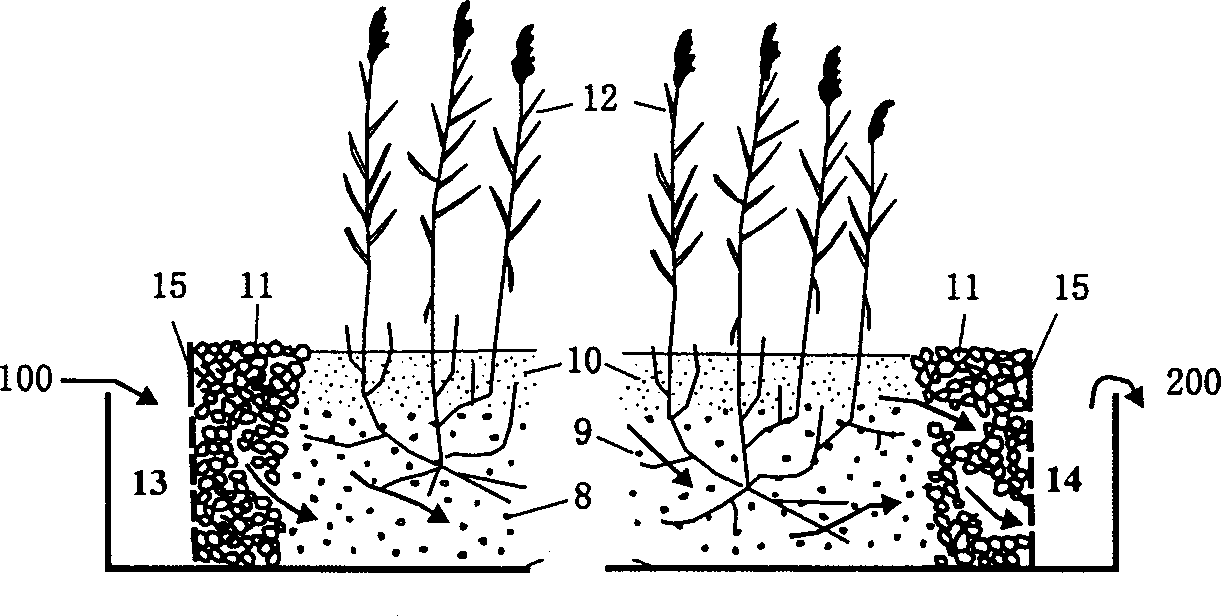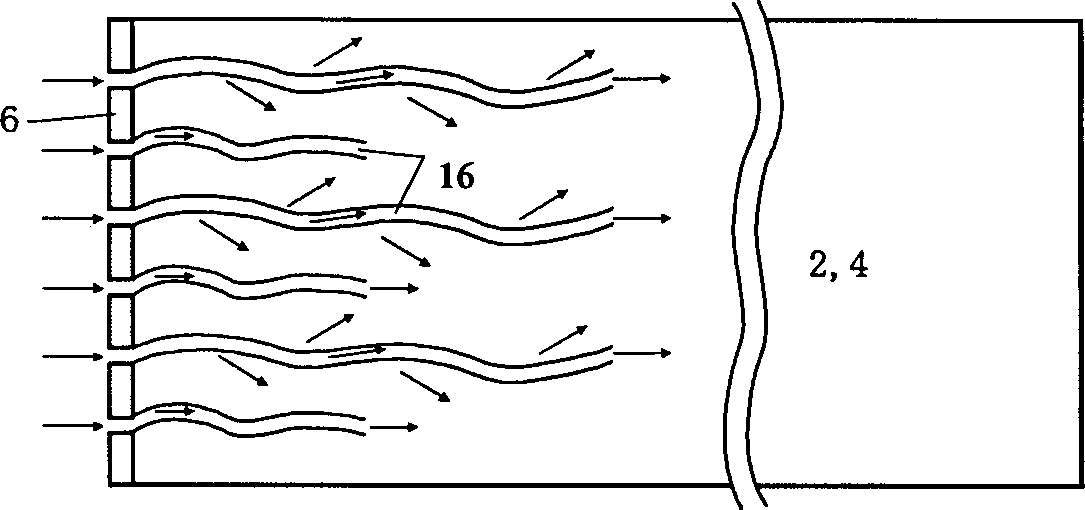Compound wetland ecology method and system for controlling pollution of nitrogen and phosphor
An ecosystem and pollution control technology, applied in chemical instruments and methods, water/sewage multi-stage treatment, water/sludge/sewage treatment, etc., can solve the problems of poor removal of nitrogen and phosphorus, large footprint, hydraulic retention Long time and other problems, to achieve the effect of uniform distribution, low operating costs, and strong resistance to ammonia nitrogen impact
- Summary
- Abstract
- Description
- Claims
- Application Information
AI Technical Summary
Problems solved by technology
Method used
Image
Examples
Embodiment approach
[0031] The composite wetland ecological method of nitrogen and phosphorus pollution control of the present invention makes full use of the hydrodynamic force of runoff or sewage and waste water, does not require energy consumption, and is in the form of push flow, such as figure 1 As shown, it flows through grit chamber 1, primary free surface constructed wetland 2, zeolite underflow wetland 3, and secondary free surface constructed wetland 4. The system can operate between the normal water level 5 and the highest water level 7, has a certain resistance to impact load, and is suitable for dealing with storm runoff.
[0032] Rainstorm runoff or sewage water flows into the grit chamber 1 to remove coarse particles and suspended matter. The setting of the grit chamber increases the system's ability to resist shock loads. The water flowing out of the grit chamber enters the first-level free surface wetland 2 through the water distribution weir 6 along the distribution channel 16, ...
specific Embodiment
[0039] A specific embodiment of the system of the present invention is as follows:
[0040] Rainstorm runoff flows into the grit chamber 1 through the grid, and the area of the grit chamber is 900m 2 , the pool depth is 0.6m;
[0041] The water flowing out of the grit chamber flows into the first-class free-surface artificial wetland 2 with a design water depth of 0.2-0.4m and an aspect ratio ≥ 2:1 through the rectangular tooth-shaped concrete distribution weir 6 and distribution channel 16, and the residence time is ≥ 1.5h. The first-class free surface artificial wetland area is 4200m 2 , planting local dominant plants such as wild rice grass, reed, water peanut, calamus, and Polygonum rubrum on the wetland.
[0042] The water flowing out of the first-level free surface constructed wetland is introduced into the zeolite subsurface flow wetland, and the residence time is ≥1.0h. An anti-seepage layer is provided at the bottom of the zeolite subsurface wetland, with an aspe...
PUM
| Property | Measurement | Unit |
|---|---|---|
| particle diameter | aaaaa | aaaaa |
| particle diameter | aaaaa | aaaaa |
| thickness | aaaaa | aaaaa |
Abstract
Description
Claims
Application Information
 Login to View More
Login to View More - R&D
- Intellectual Property
- Life Sciences
- Materials
- Tech Scout
- Unparalleled Data Quality
- Higher Quality Content
- 60% Fewer Hallucinations
Browse by: Latest US Patents, China's latest patents, Technical Efficacy Thesaurus, Application Domain, Technology Topic, Popular Technical Reports.
© 2025 PatSnap. All rights reserved.Legal|Privacy policy|Modern Slavery Act Transparency Statement|Sitemap|About US| Contact US: help@patsnap.com



